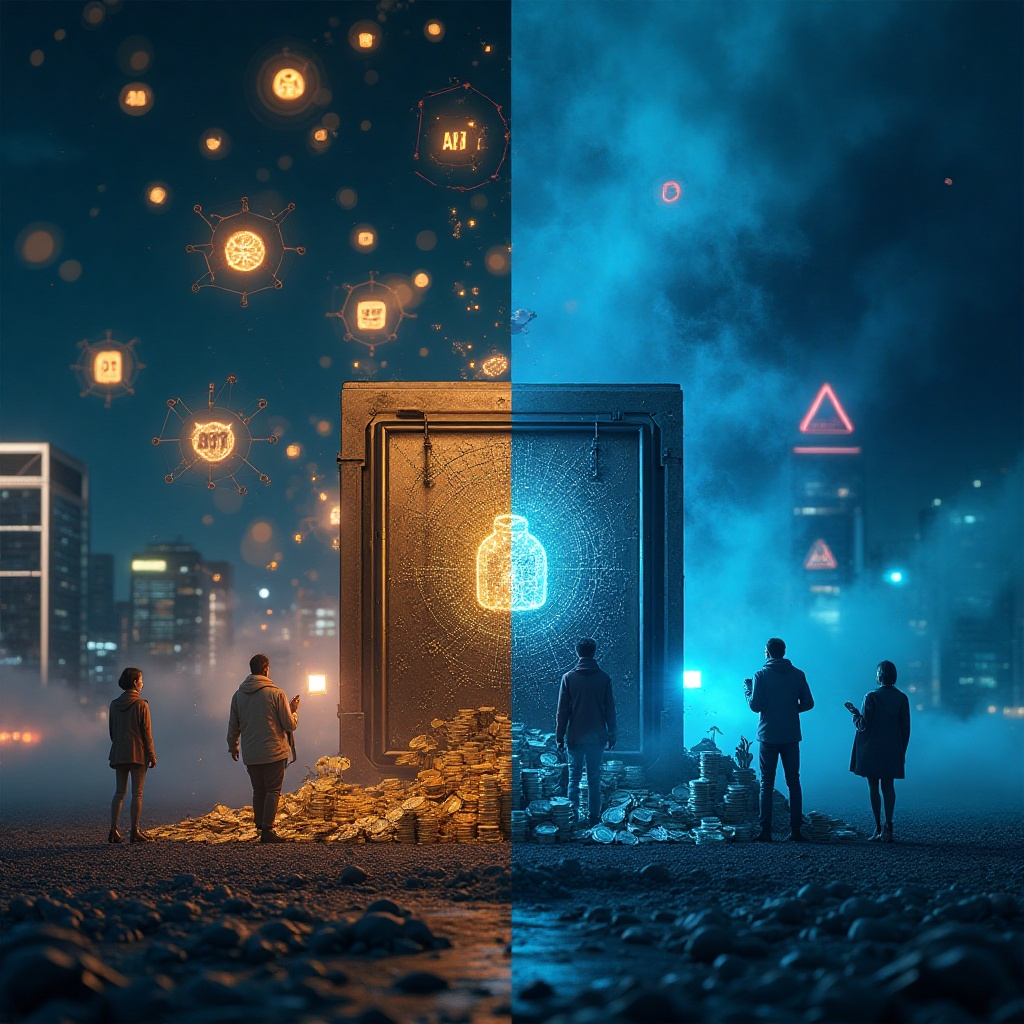The NFT market, once a gold rush for digital creators, now faces a critical challenge: saturation. In 2023, over 80% of NFT projects failed to retain value beyond their mint date, according to industry reports. With thousands of new NFTs minted daily and collector fatigue setting in, artists and creators must pivot to survive. This article explores how creative utility—embedding real-world value and experiences into NFTs—can help creators thrive in an oversaturated landscape.
The Saturation Problem
The NFT market has reached a tipping point. Data reveals declining floor prices for even well-known collections, alongside a glut of low-effort projects flooding platforms. Collectors, overwhelmed by choice, now prioritize projects offering lasting value. The solution lies in moving beyond static digital art. NFTs must evolve into dynamic assets with utility that extends beyond ownership, such as exclusive access, physical perks, or community governance.
What is Creative Utility?
Creative utility refers to tangible benefits tied to NFT ownership. These can include:
- Access: VIP events, token-gated content, or metaverse experiences.
- Ownership Rights: Commercial licensing or revenue-sharing opportunities.
- Hybrid Perks: Redeemable physical goods or services.
Projects emphasizing utility consistently outperform purely artistic NFTs. For example, utility-driven NFTs retain resale values three times higher than non-utilitarian counterparts, as noted in recent market analyses.
Case Studies: Emerging Designers Who Mastered Utility
FVCKRENDER
This 3D artist bundled NFTs with exclusive VR gallery access, allowing collectors to display their purchases in immersive virtual spaces. The strategy led to a 400% surge in secondary sales post-launch, proving that layered experiences resonate with buyers.
Lirika Matoshi
A digital fashion pioneer, Matoshi linked NFTs to redeemable physical couture pieces. Her collection sold out in 72 hours, with a 90% retention rate among holders, showcasing the demand for hybrid digital-physical assets.
Ovie Faruq
Faruq’s generative music NFTs include royalty-sharing smart contracts, enabling fans to earn a percentage of streaming revenue. This innovation generated significant secondary trading volume, highlighting the appeal of financial utility.
Creative Utility Strategies for NFT Creators
1. Storytelling & IP Ownership
Granting collectors commercial rights to NFT artwork can boost long-term engagement. For instance, some projects allow holders to license characters for merchandise, creating recurring revenue streams. Platforms offering customizable IP terms simplify this process.
2. Gamification & Tiered Access
Unlockable rewards, such as member-only metaverse events or progressive artwork upgrades, keep collectors invested. Tools exist to embed gamified mechanics directly into smart contracts.
3. Physical-Digital Hybrids
Collaborate with manufacturers to offer redeemable physical goods. A notable example includes NFTs linked to limited-edition sneakers, which sold out instantly due to their dual digital and real-world appeal.
4. Community-Driven Utility
Let NFT holders govern project decisions via decentralized autonomous organizations (DAOs). One prominent DAO allows members to vote on charitable donations, fostering loyalty and participation.
5. Dynamic NFTs (dNFTs)
Art that evolves based on external data—like weather or sports scores—creates a living asset. Early adopters have used collector voting to alter NFT traits, ensuring ongoing engagement.
Web3 Tools for Building Utility
- AI & Generative Art: Tools enable creators to algorithmically generate unique NFT traits, ensuring scarcity.
- AR/VR Integration: Platforms allow artists to design immersive experiences, from virtual galleries to interactive metaverse spaces.
- Token-Gated Access: Software restricts Discord channels or content to verified NFT holders, enhancing exclusivity.
Ensuring Long-Term Sustainability
- Royalties: Opt for platforms that enforce creator royalties (5-10% on resales) to guarantee perpetual income.
- Subscription Models: Offer NFT “memberships” with recurring perks, such as monthly artwork unlocks or live Q&A sessions.
- Fractional Ownership: Split high-value NFTs into affordable shares, broadening your collector base.
Collaboration: The Key to Amplification
Partnering with brands or other creators multiplies reach. A digital artist’s collaboration with a major magazine, for example, lent credibility and attracted mainstream attention. Cross-project utilities, like NFT staking for cryptocurrency rewards, also incentivize holder retention.
Pitfalls to Avoid
- Overpromising: Projects that fail to deliver on utility pledges (e.g., unmet metaverse integrations) erode trust.
- High Gas Fees: Minting on eco-friendly, low-cost blockchains prevents pricing out smaller collectors.
- Community Neglect: Regular engagement via polls, airdrops, or AMAs keeps holders invested.
The Future of Utility-Driven NFTs
Emerging trends suggest a shift toward deeply integrated utility:
- Soulbound Tokens (SBTs): Non-transferable NFTs may soon represent credentials, like event attendance or skill certifications.
- DePIN Integration: NFTs could grant access to decentralized physical infrastructure, such as WiFi networks or energy grids.
Experts predict that by 2025, most NFTs will include embedded utility, transforming them from collectibles into multifunctional tools.
In a saturated market, utility isn’t optional—it’s essential for survival. By prioritizing ongoing value, collaborating strategically, and leveraging Web3 tools, creators can cut through the noise. Start small: add token-gated Discord perks to your next drop, or partner with a local brand for hybrid physical-digital rewards. The future belongs to NFTs that do more than look pretty—they work harder for their owners.





